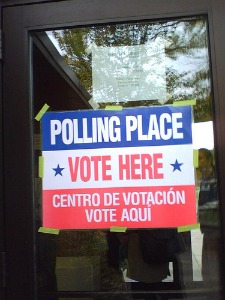The Latino Voting Rights Saga: It’s Complicated
 A three-judge federal panel in Washington will be hearing two weeks’ worth of testimony, starting this week, on Texas’ congressional redistricting maps. Again?
A three-judge federal panel in Washington will be hearing two weeks’ worth of testimony, starting this week, on Texas’ congressional redistricting maps. Again?
If you’re thinking, “Didn’t they already do this?” I’m with you. It seems like they have — or that someone has, somewhere, recently. Wasn’t that what the U. S. Supreme Court was doing last week or so?
I’m going to pull an overused cliché to explain this: it’s complicated. Even if you’re from Texas, it can get dizzying. But even if you’re not, it’s very relevant. So, yes, the Supreme Court did, in fact, hear arguments about this case; and yes, a Federal Court in San Antonio did make a ruling on it; and yes, a three judge federal panel will do another two weeks on it. So why the overkill?
Let me take a quick stab at explaining it:
- The case comes as a consequence of Latino population growth.
- Texas is due to get 4 new congressional districts because of it’s population growth — fueled primarily by Latinos.
- Latino leaders in Texas believe that at least 3 of the 4 new districts should be Latino-majority.
- The district maps drawn by the Republican-led Texas legislature allowed for only 1 new Latino-majority district.
- The same Texas Latino leaders believe these Republican-drawn maps discriminate against Latino voters.
So groups like MALDEF and Texas’ MALC (Mexican American Legislative Caucus) cried foul.
- They sued in Federal Court in San Antonio. That three-judge panel struck down the Republican maps, the parties then generated interim maps, and moved the Texas primary from March to April to accommodate the changes.
- The Republicans then promptly objected to the interim maps and took their concerns to the Supreme Court – they’d like the old maps to remain as drawn.
- Meanwhile, because of Section 5 of the Voting Rights Act (known as the preclearance section), the maps need to be approved by either the Justice Department or a District Court in the District of Columbia. But the
- Republican Texas leadership felt that they had little to no chance of having their maps approved by the Obama Justice Department, so they took their maps to the Federal court for approval (this is the hearing that started this week).
- If the panel in D.C. finds that the maps discriminate against Latino voters, all eyes will be on the Supreme Court to see if it will validate the interim maps drawn at the Federal district Court level.
I told you it was messy:
- The D.C. Section 5 hearing is slated to last two weeks, but
- The U.S. Supreme Court could deliver its own verdict, on the interim maps, earlier than that.
And this matters because:
- Call it a dry-run of similar battles that will be fought in the not too distant future in places where Latino population growth will require redistricting – that means places like California in general, and Chicago and other cities specifically.
- The case, as it is vented at the Supreme Court, is seen by some folks as a validation of Section 5 of the Voting Rights Act. What the Supreme Court Justices decide could hold the future of minority voting rights in the balance.
It sounds like a Texas thing, but it’s not; it’s just complicated.
[Photo by Mrs. Gemstone]
